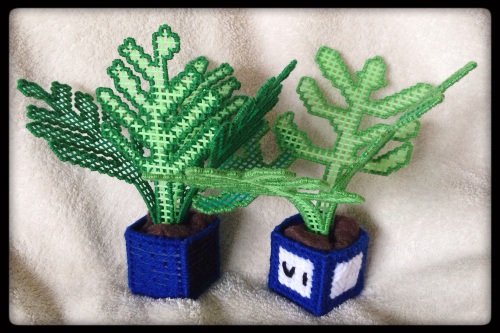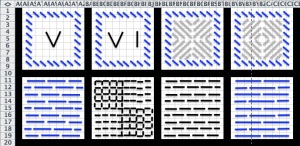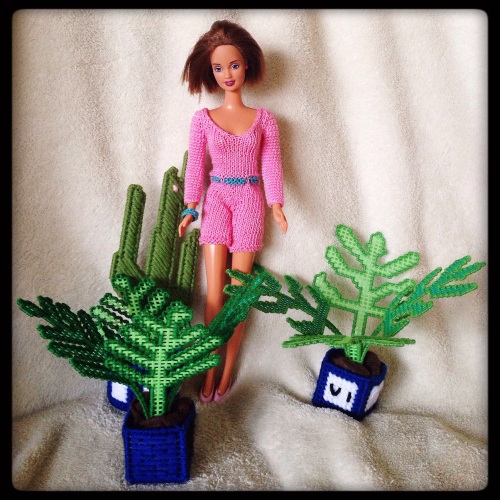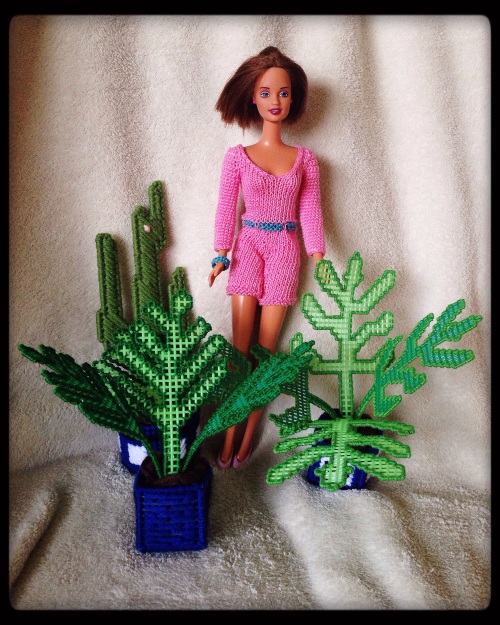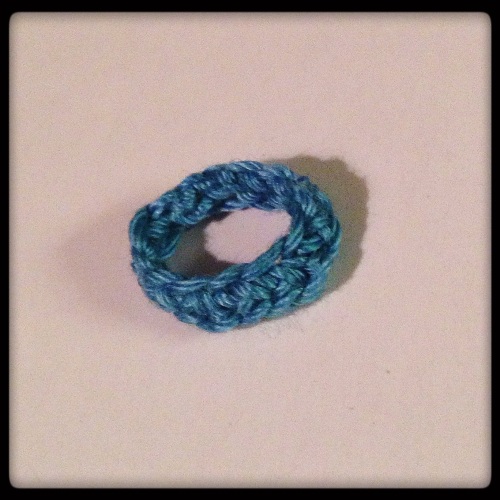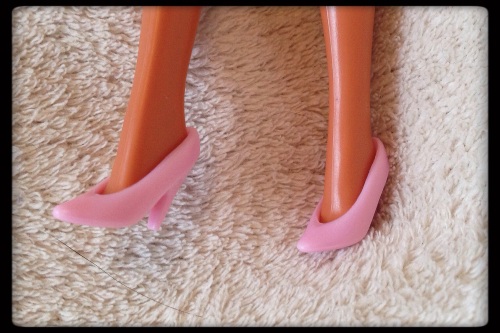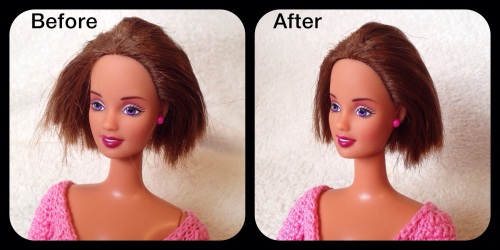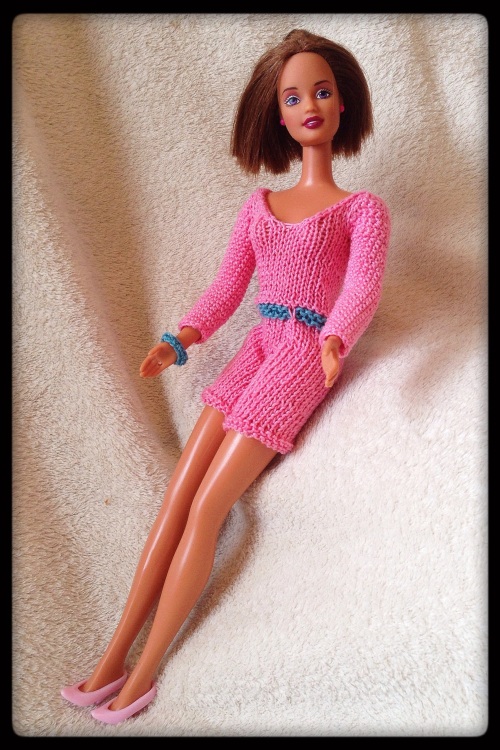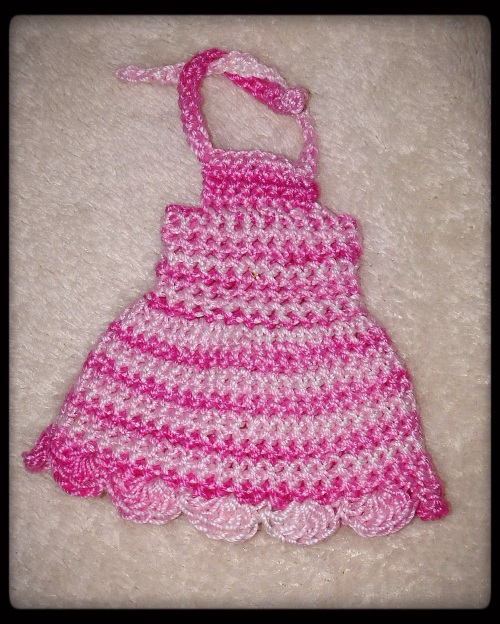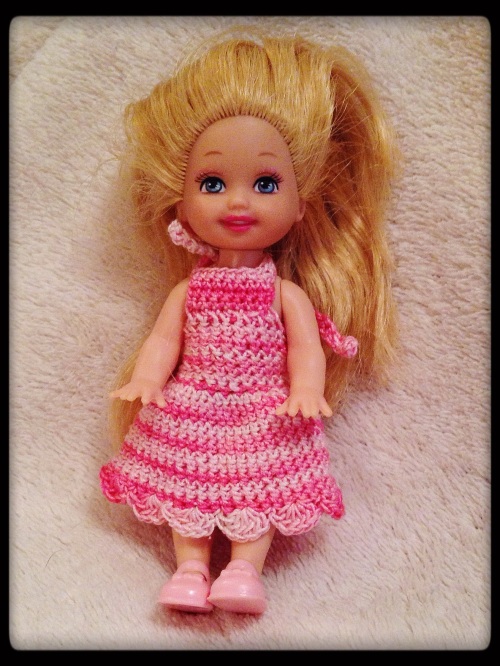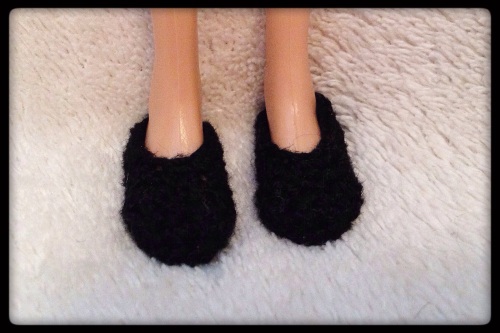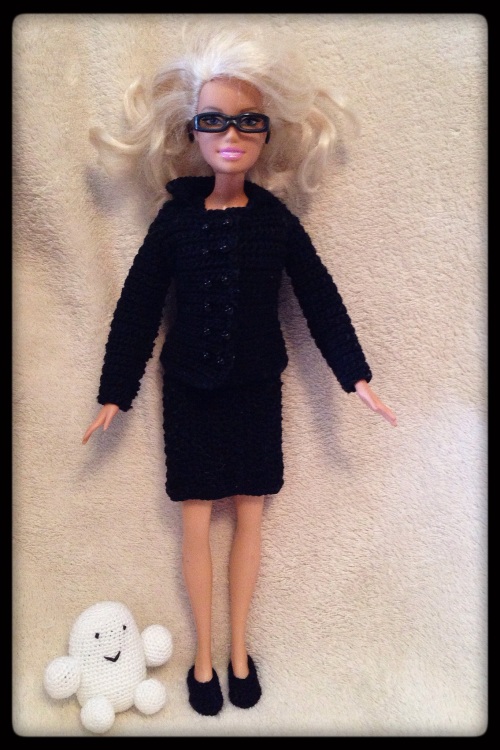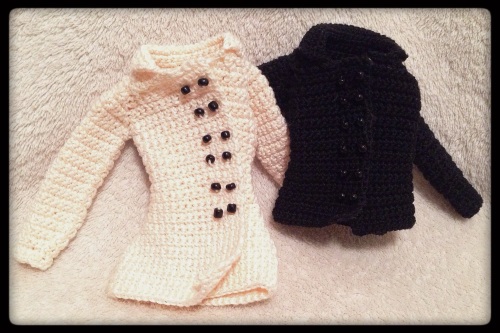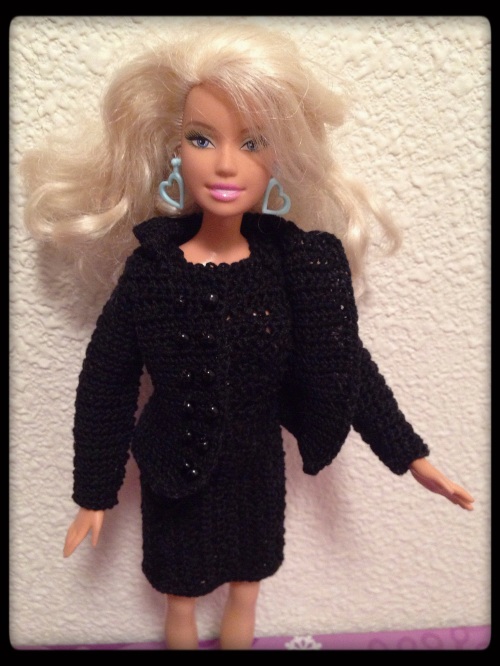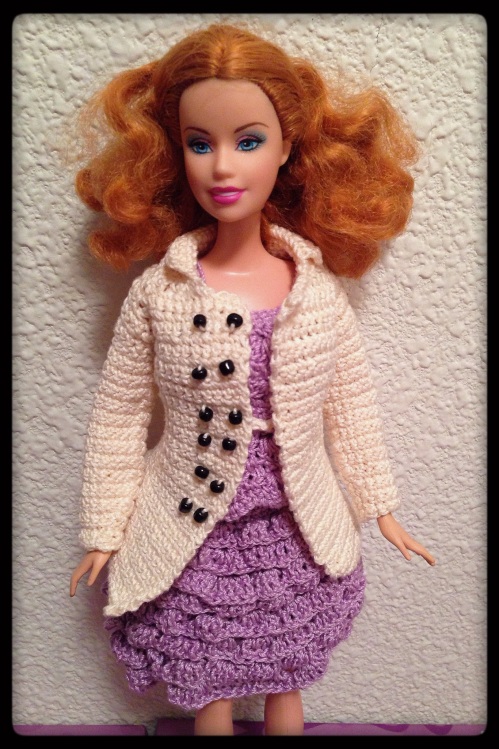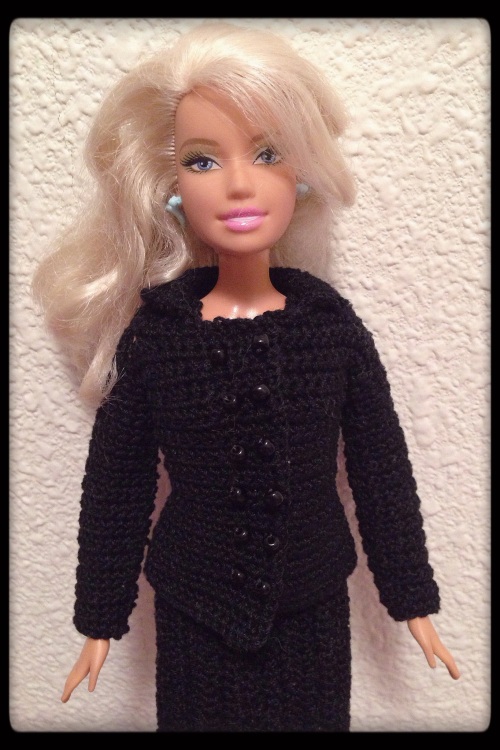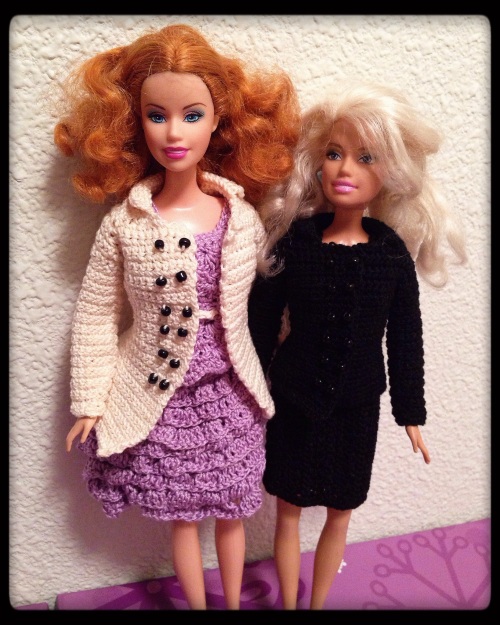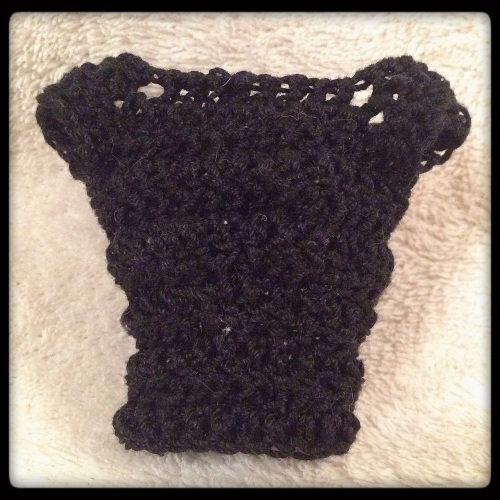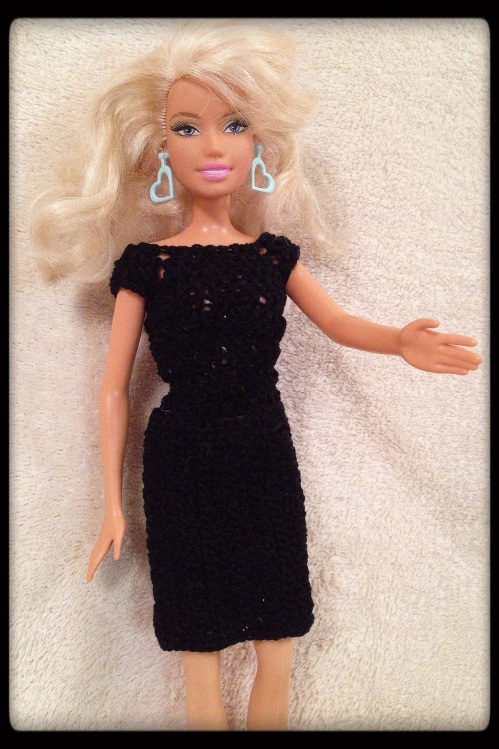This pattern is designed for a belly-button typed 11.5″ Barbie doll, but it also fits the older narrow-hipped dolls fairly well. It should fit most of the different Barbie doll body types if you take care when knitting the top half of the pants and cast off with enough slack.
Supplies:
– Size 10 Crochet Thread
– Size 0 (2.00 mm) Knitting Needles
– Size 0 (2.00 mm) Cable Holder OR an extrea Size 0 (2.00 mm) Knitting Needle
Here are a few notes before you begin:
– This pattern can be modified for length – you can easily subtract rows for a better fit for a Skipper or Disney doll.
– Slip the first stitch of every row for a nicer edge that sews together better than a rough non-slip stitched edge.
– k2p2 is optional as you cast off; I didn’t notice a big difference in the finished product between only knitting the cast off row and alternating that row between knits and purls to match the previous rows.
Abbreviations:
P – Purl Stitch
K – Knit Stitch
k2p2 – two knit stitches followed by two purl stitches; repeat this pattern through the end of the row
p2k2 – two purl stitches followed by two knit stitches; repeat this pattern through the end of the row
Stockinette Stitch – A technique where you knit one row and pearl the next row to make a smooth piece of fabric
K2tog – Knit 2 stitches together
– Leg (Make 2) –
Row 1: Cast on 28 stitches
Rows 2-71: Stockinette stitch (knit one row, purl the next) for 70 rows, beginning with a knit row (28 stitches)
Row 72: Cast off 2, knit remaining row (26 stitches)
Row 73: Cast off 2, purl remaining row (24 stitches)
Row 74: Cast off 1, knit remaining row (23 stitches)
Row 75: Cast off 1, purl remaining row (22 stitches)
DO NOT cast off – once this leg is finished, place it on a cable holder or set the needle aside while you stitch the second leg
DO cut the thread and leave a tail on the first leg so that your thread is available to work on the second leg – the second leg does not require the thread to be cut – you can move on to create the top without cutting the thread on the second leg
– Top –
Row 76: Knit 21 on the second leg, join the final stitch of the second leg with the first stitch of the first leg with a k2tog, knit 21 on the first leg (make sure that you keep the right and wrong sides of the fabric on each leg facing the same direction – the fabric created by stockinette stitch has a front and a back and it will not look right if one is backwards) (43 stitches)
Rows 77-79: stockinette stitch for 3 rows (43 stitches)
Row 80: K10, k2tog, k8, k2tog, k9, k2tog, k10 (40 stitches)
Rows 81-85: stockinette for 5 rows (40 stitches)
Row 86: K12, k2tog, k12, k2tog, k12 (38 stitches)
Rows 87-89: stockinette for 3 rows (38 stitches)
Row 90: K11, k2tog, k12, k2tog, k11 (36 stitches)
Row 91: k2p2 (36 stitches)
Row 92: p2k2 (36 stitches)
Row 93: k2p2 (36 stitches)
Row 94: p2k2 (36 stitches)
Row 95: Cast off (do this loosely so that the top has some stretch – do not repeat my mistake)
– Finishing –
Finish the pattern by sewing the seams together. I find that it is easiest to sew the back of the top from top to bottom first, and then work your way down both legs. It is easier to work from the top down because then you won’t end up with uneven ends in the crotch area. It is much easier to regulate the stretch of the fabric as you work down the legs, and you can adjust it as needed to keep it even. The hardest part things in this pattern to sew is the crotch area, so make sure to take your time so that you don’t sew the wrong edges together. Once the pants are sewn together and you have worked in any loose ends, your doll will have a sweet new pair of slacks.
That is it! Once you complete these steps, you will be in possession of a lovely pair of straight-leg Ood pants. I am happy that I was able to share this with everybody. I look forward to sharing the Ood Mask pattern with you all once it has been perfected.
This is my original pattern and protected by copyright law. These instructions may not be duplicated, distributed, or sold in any form. You are welcome to create and sell the items that you make using this pattern; I kindly ask that you link back to my blog if you do so. If you make this pattern, please let me know! I would love to see your work, and I will update the pattern as needed with the feedback given.

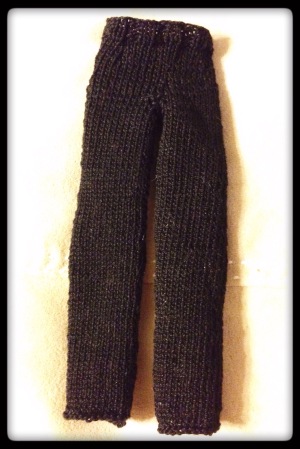
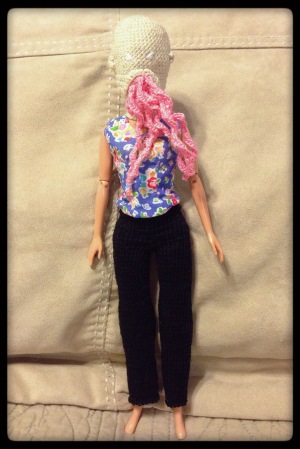
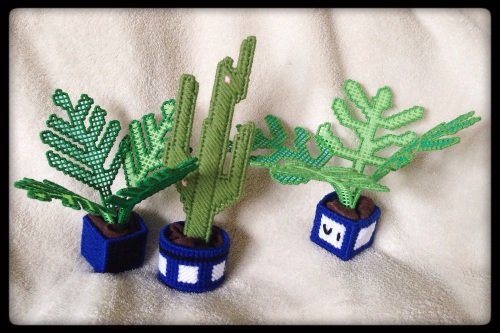
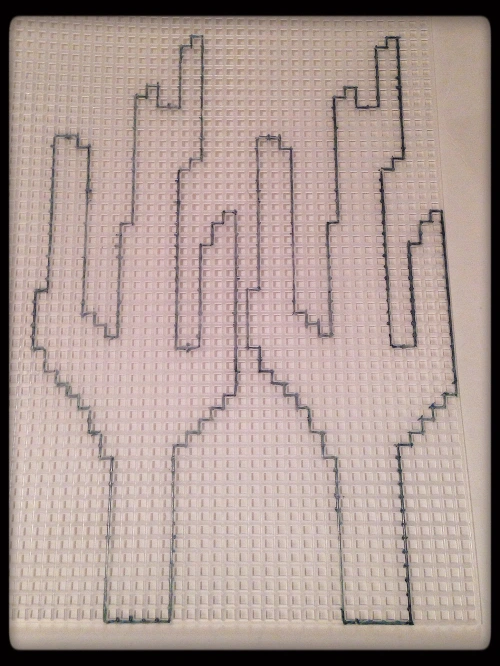
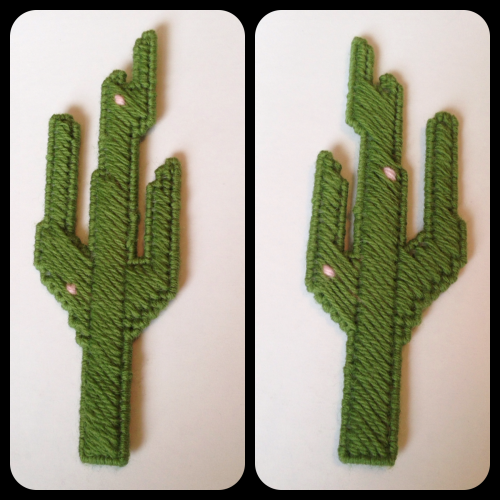
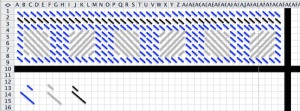

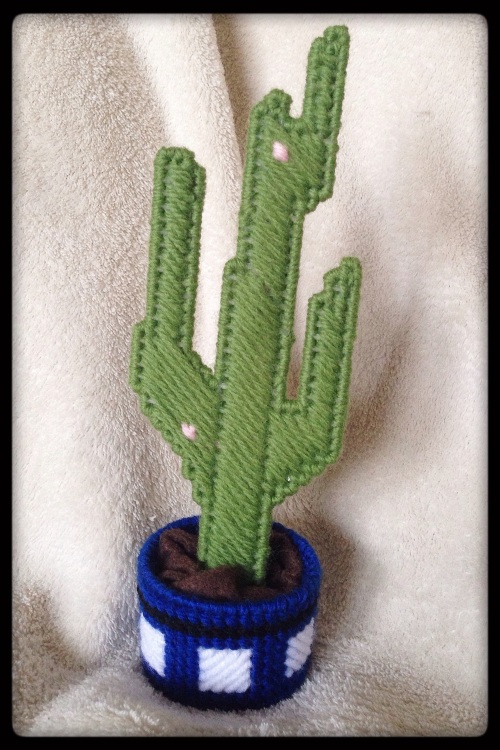
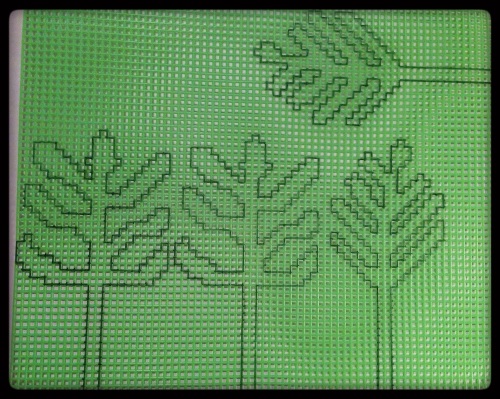
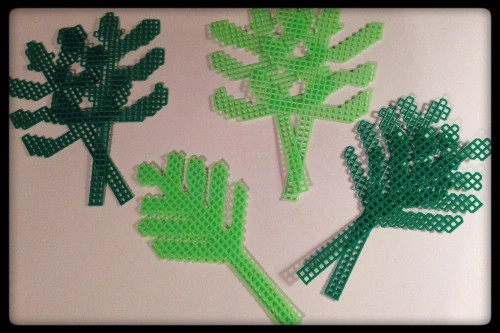 Cutting these plants out was harder than the cactus. Both were much more intricate, and it had multiple thin areas between the leaves. Luckily, plastic canvas is fairly durable and I was able to get through it without cutting myself or ruining the piece. I also chose to deviate from the pattern by sewing the edges with green crochet thread. I used the deep, emerald green thread I bought at a thrift store a few weeks ago for one plant and a lighter green that I purchased from a thrift store ages ago for the second. I like how the thread edging softens up the edges, but it took about an hour to sew around each leaf. I really prefer the more polished look, so it was worth the extra effort. The crochet thread I used looks like size 10, and it took three to seven stitches in each square of plastic canvas to get good coverage around the edges.
Cutting these plants out was harder than the cactus. Both were much more intricate, and it had multiple thin areas between the leaves. Luckily, plastic canvas is fairly durable and I was able to get through it without cutting myself or ruining the piece. I also chose to deviate from the pattern by sewing the edges with green crochet thread. I used the deep, emerald green thread I bought at a thrift store a few weeks ago for one plant and a lighter green that I purchased from a thrift store ages ago for the second. I like how the thread edging softens up the edges, but it took about an hour to sew around each leaf. I really prefer the more polished look, so it was worth the extra effort. The crochet thread I used looks like size 10, and it took three to seven stitches in each square of plastic canvas to get good coverage around the edges.